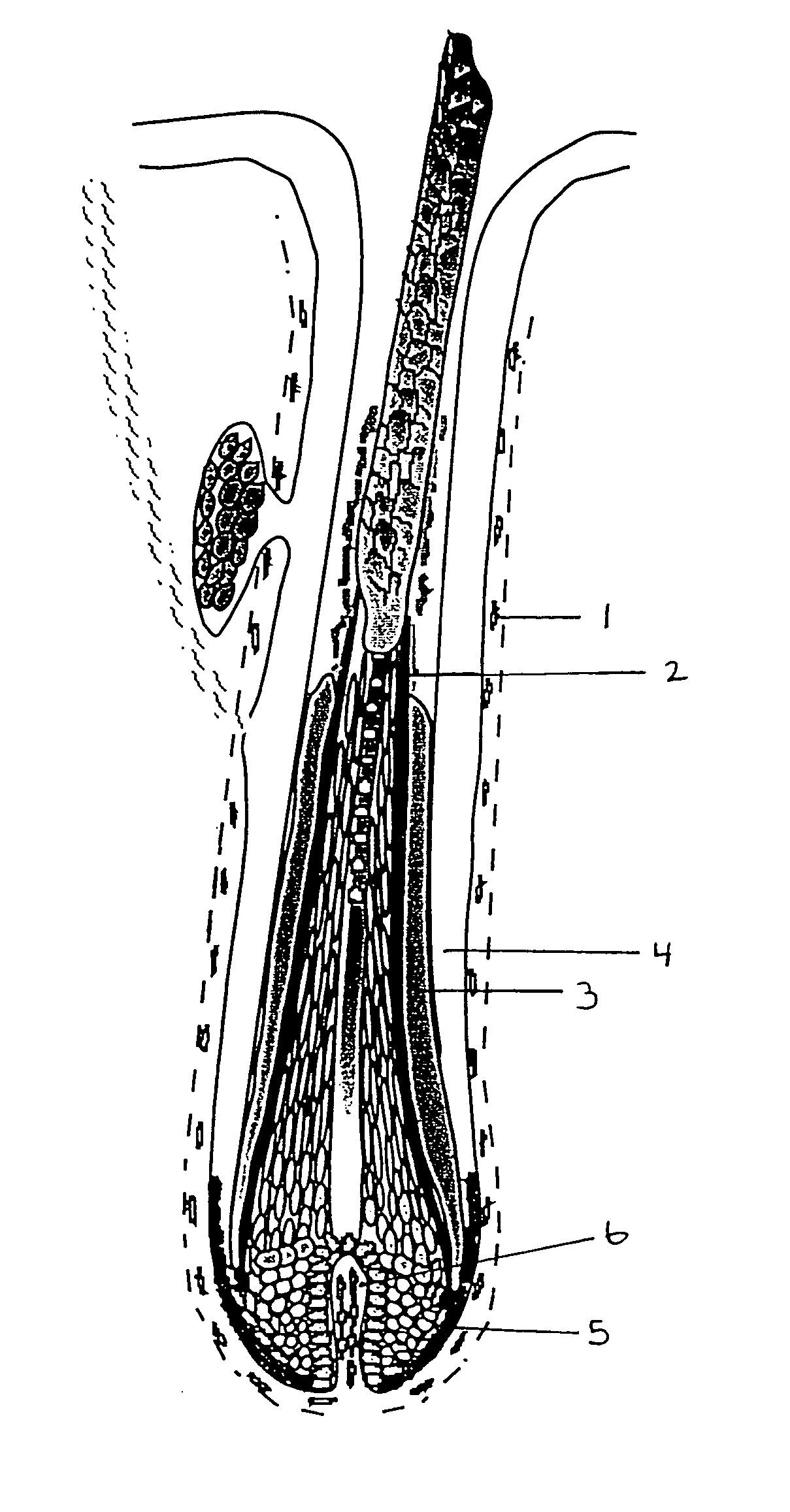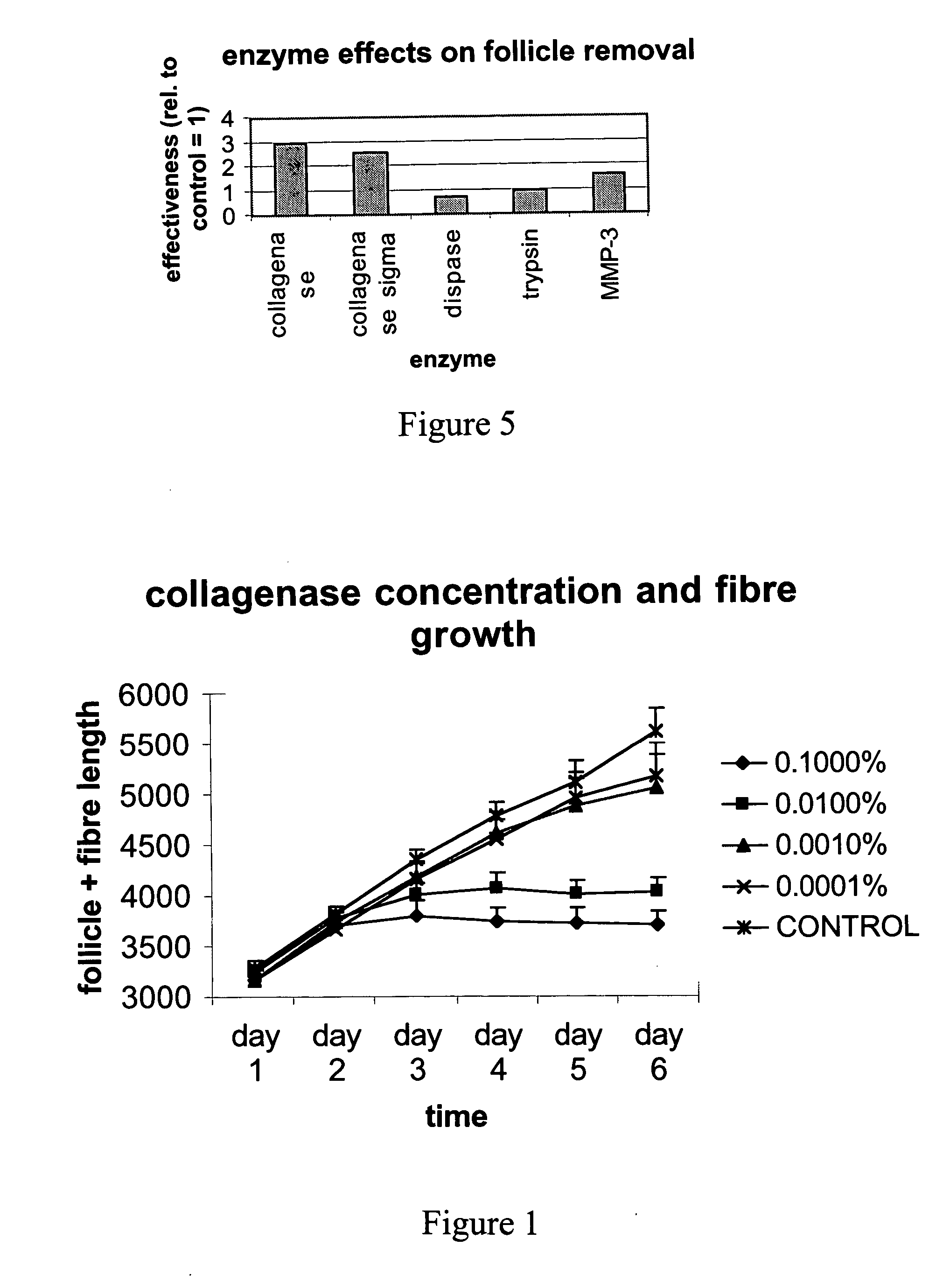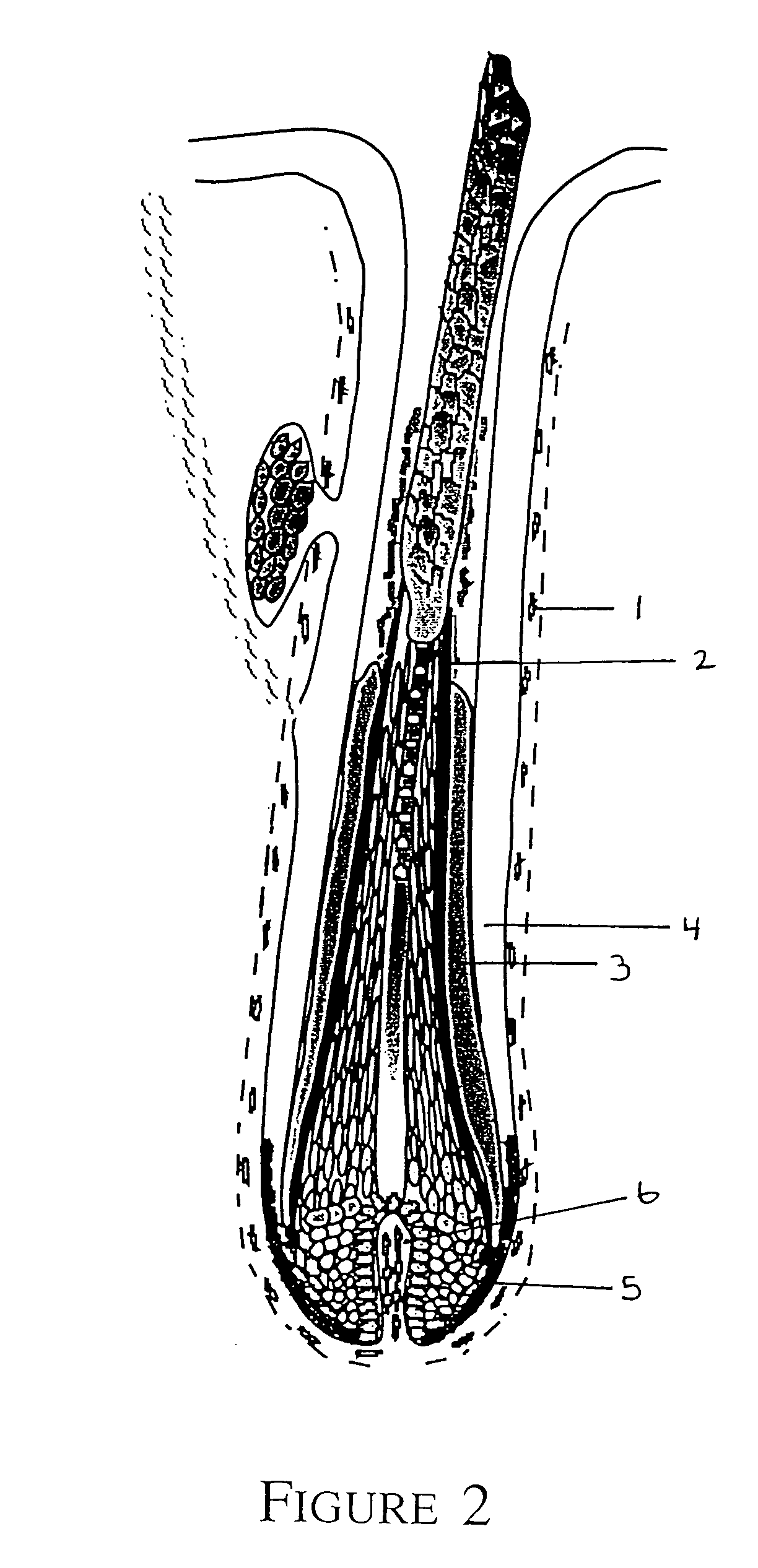Hair removal and animal husbandry method
a technology for animal husbandry and hair removal, applied in the field of hair removal and animal husbandry methods, can solve the problems of increasing the chances of infection, secondary joint infections, and wound contraction and distortion of tail and vulva, and achieves the effect of simple approach to long-term hair removal and easy application
- Summary
- Abstract
- Description
- Claims
- Application Information
AI Technical Summary
Benefits of technology
Problems solved by technology
Method used
Image
Examples
example 1
Cultured Follicle Growth is Inhibited by Collagenase
[0049] A thin strip of skin was removed from an anaesthetised area of the midside of a sheep. The skin strip was immediately placed in culture media (Williams E-Sigma Chemical Co.) and taken to the laboratory. Follicles were microdissected from the skin and placed in individual wells in a 24-well plate. Williams E Media was added to each well. Varying concentrations of collagenase were added to each well (0.1%, 0.01%, 0.001% and 0.0001% and 0% collagenase (Sigma crude collagenase Type 1A Sigma product no. C9891). Fibre growth was measured daily for 6 days. Detailed description of the in vitro culture method is presented in (Bates, Hynd, Penno and Nancarrow 1997-British J. Dermatology 137: 498-505. See FIG. 1 for results.
example 2
Treatment of Pig Skin
[0050] Methods
[0051] A dead piglet was obtained and the skin surface was cleaned using 70% ethanol. A collagenase mixture (1% w / w of Type IV, Type II, Type XI and Type V collagenases (Sigma Pharmaceutical, Australia)) in soft, white paraffin (Prosana Laboratories, Queensland, Australia) was painted onto one midside of the dead pig and the painted area of skin was heated using an infrared lamp at a distance of about 25 cm from the skin surface for 30 mins. After this time the pig was rotated and the opposing midside was painted with soft, white paraffin containing no collagenase. This skin surface was also heated for 30 mins using the infrared lamp as before. After cooling for approximately 10 mins the paraffin and paraffin / collagenase mixtures were scraped from the skin surface.
[0052] Fibres were then plucked from each side using forceps and mounted onto microscope slides with DePeX for microscopy. Both treated areas of skin were then waxed using a commercial...
example 3
Testing of Different Enzymes
[0068] The crutch of live sheep were tested for the effectiveness of a range of enzymes to assess the likely range of enzymes that might have an effect.
[0069] The following enzyme solutions were prepared: 0.1% collagenase (crude collagenase Type 1A Sigma Product no. C9891 made in saline with CaCl2 0.13 g / l, collagenase sigma blend Type F (Sigma Product no. C7926) made in saline with CaCl2 0.13 g / l, 0.1% dispase I (Roche Diagnostics Australia Product no. 210455 made in saline with no CaCl2, 0.5% trypsin / EDTA Gibco BRL Product no. 15405-012 made in saline with no CaCl2, 0.1% MMP3 (stromelysin, transin, proteoglycanase) Sigma Product no. M1677 made in saline with CaCl2 0.13 g / l. For each enzyme 1 ml was injected dermally. Approximately 2 hours later, the wool fibres on injected sites were plucked manually using forceps. Plucked fibres were placed on microscope slides with paraffin oil and the number of intact follicles versus broken follicle ends counted. ...
PUM
| Property | Measurement | Unit |
|---|---|---|
| Fraction | aaaaa | aaaaa |
| Fraction | aaaaa | aaaaa |
| Fraction | aaaaa | aaaaa |
Abstract
Description
Claims
Application Information
 Login to View More
Login to View More - R&D
- Intellectual Property
- Life Sciences
- Materials
- Tech Scout
- Unparalleled Data Quality
- Higher Quality Content
- 60% Fewer Hallucinations
Browse by: Latest US Patents, China's latest patents, Technical Efficacy Thesaurus, Application Domain, Technology Topic, Popular Technical Reports.
© 2025 PatSnap. All rights reserved.Legal|Privacy policy|Modern Slavery Act Transparency Statement|Sitemap|About US| Contact US: help@patsnap.com



